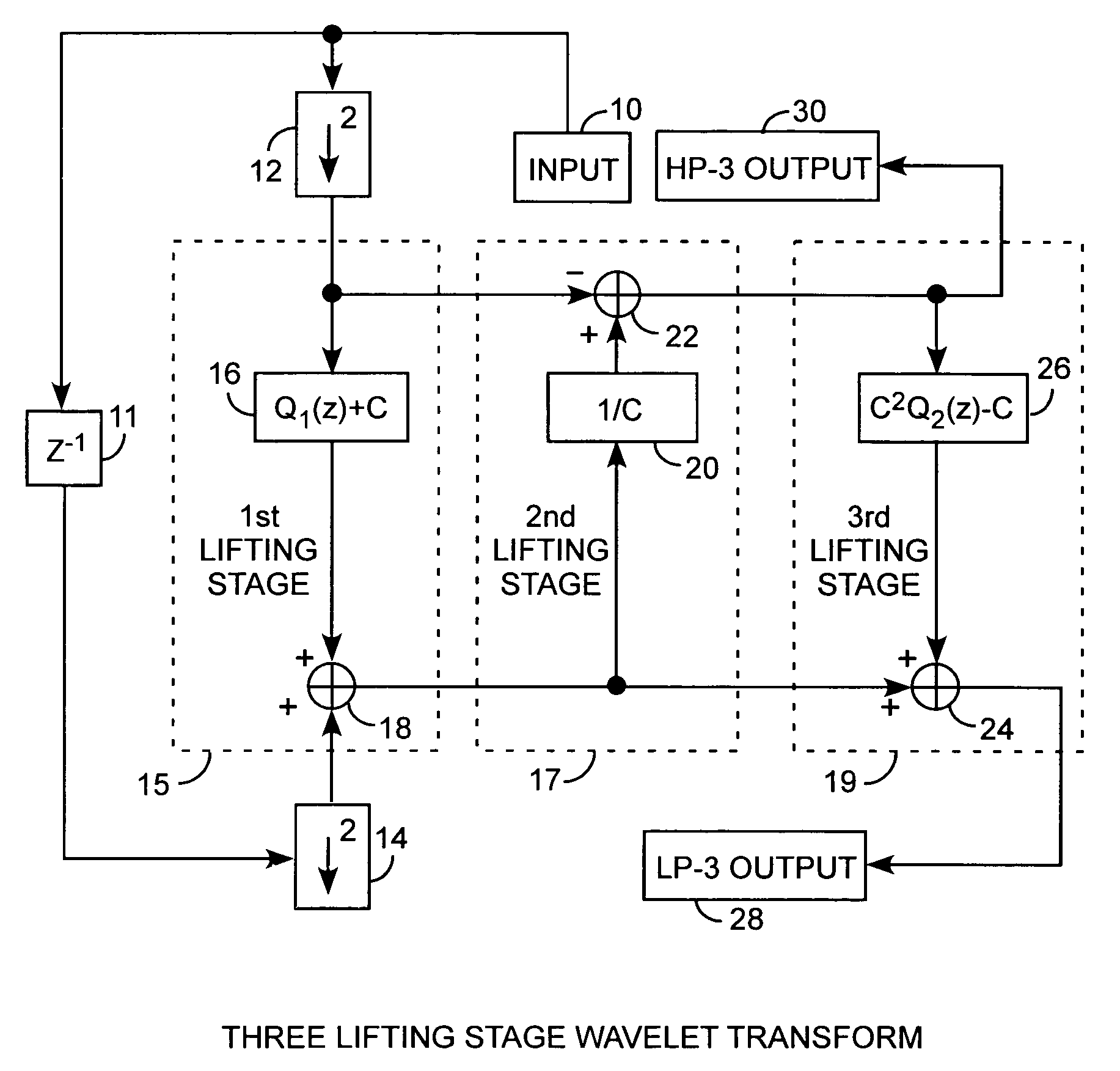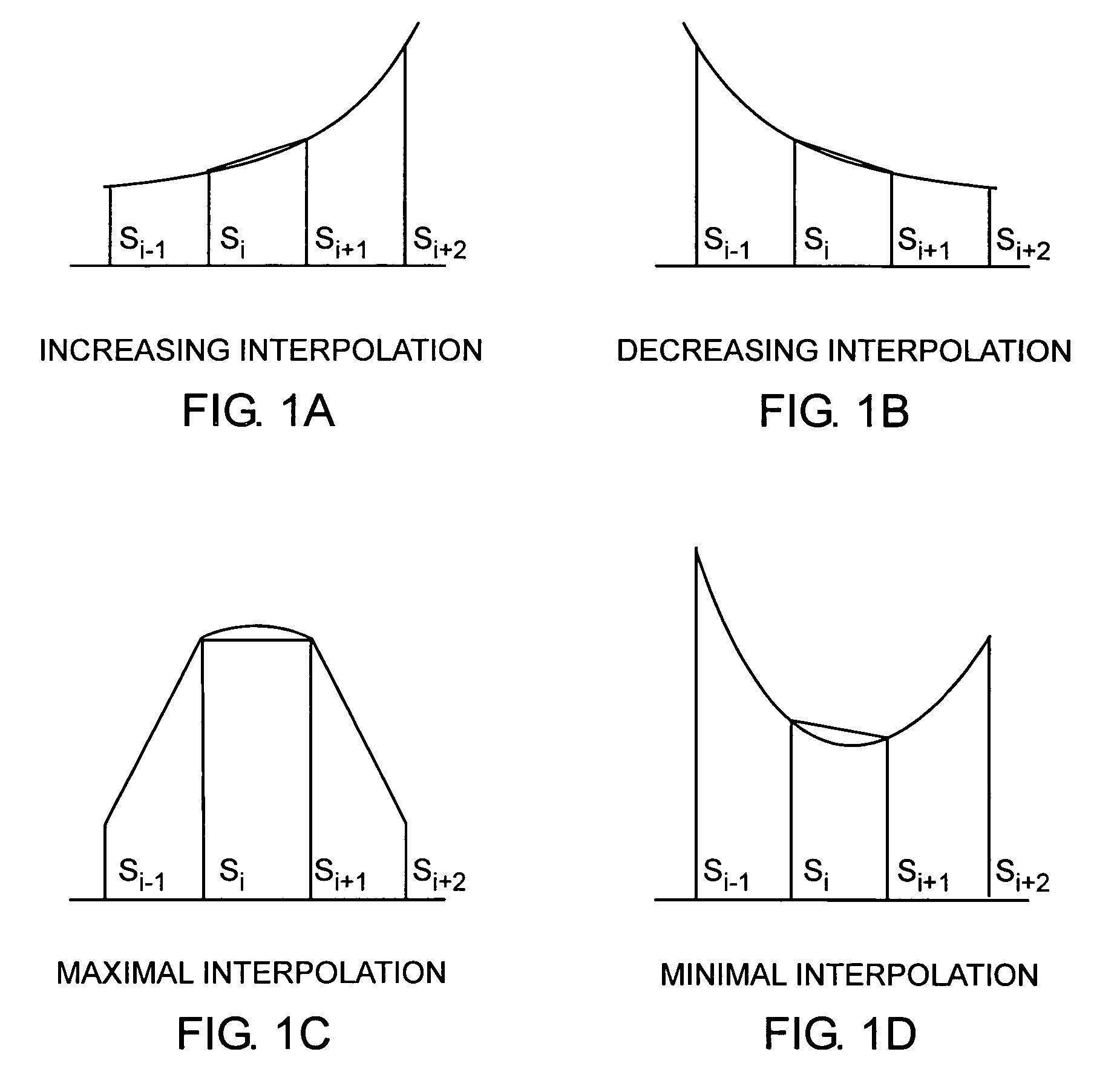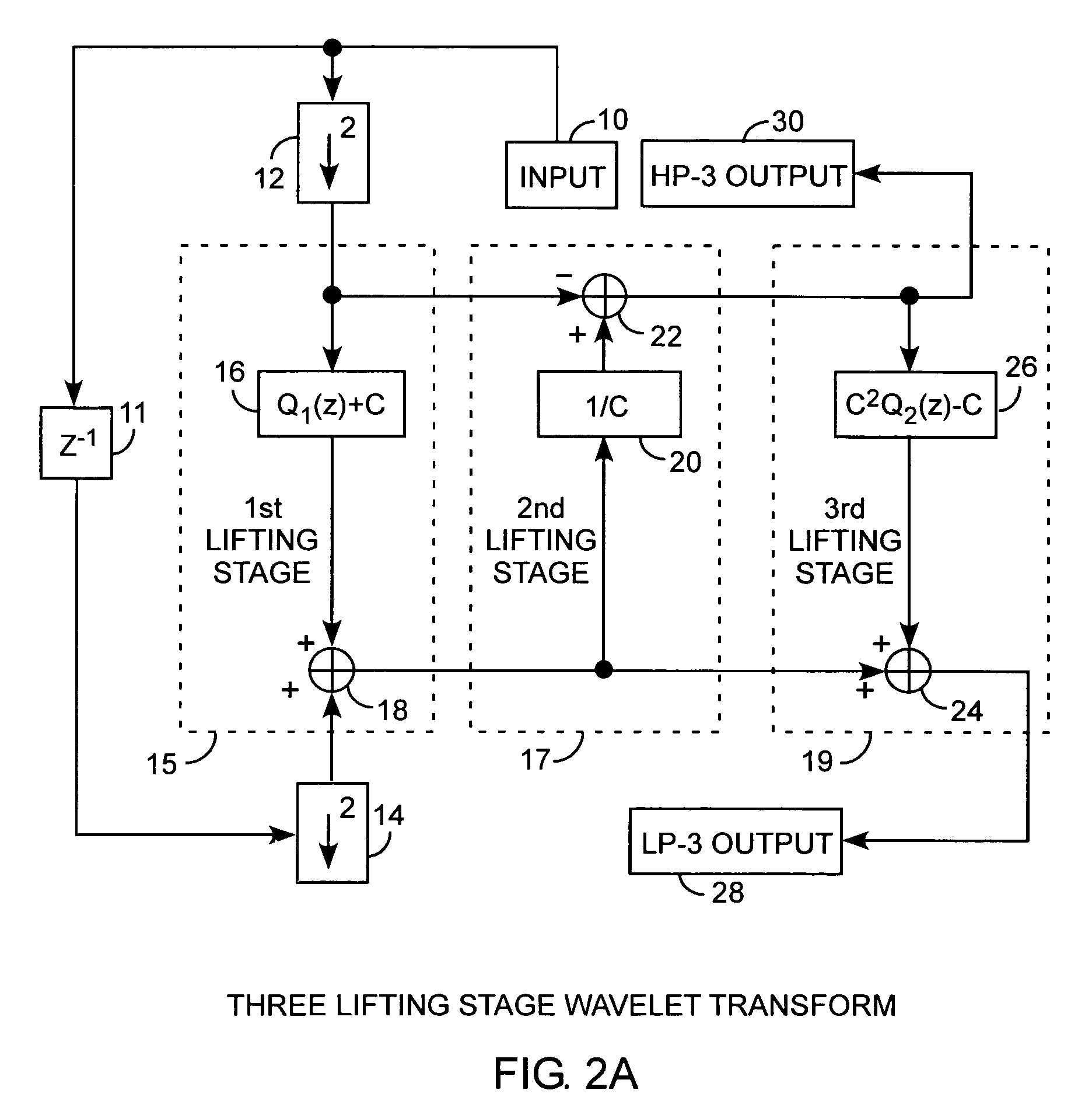Fast lifting lossless wavelet transform
a wavelet transform and wavelet transform technology, applied in the field of wavelet transforms, can solve the problems of signal delay, memory space saving, and the reduction of so as to reduce the number of lifting steps, improve compression ratio, and accurately predict image edges
- Summary
- Abstract
- Description
- Claims
- Application Information
AI Technical Summary
Benefits of technology
Problems solved by technology
Method used
Image
Examples
Embodiment Construction
[0059]An embodiment of the invention is described with reference to the figures using reference designations as shown in the figures. Referring to FIG. 2A, a three lifting stage wavelet transform is used for transforming an input 10. The lifting wavelet transform performs downsampling using an even downsampler 12 for downsampling the input 10 into the even numbered samples, a z−1 time delay 11 for delaying the input into a delayed input, and an odd downsampler 14 for downsampling the delayed input into the odd numbered samples. The downsamplers 12 and 14 downsample the input 10 into a sequence of even numbered samples and a sequence of odd numbered samples for generating consecutive even and odd numbered samples that are separated in time by the sampling time delay. The three lifting stage transforms includes three lifting stages. The first lifting stage 15 processes the odd and even numbered samples into a first lifting output. The first lifting stage 15 includes a first [Q1(z)+C] ...
PUM
 Login to View More
Login to View More Abstract
Description
Claims
Application Information
 Login to View More
Login to View More - R&D
- Intellectual Property
- Life Sciences
- Materials
- Tech Scout
- Unparalleled Data Quality
- Higher Quality Content
- 60% Fewer Hallucinations
Browse by: Latest US Patents, China's latest patents, Technical Efficacy Thesaurus, Application Domain, Technology Topic, Popular Technical Reports.
© 2025 PatSnap. All rights reserved.Legal|Privacy policy|Modern Slavery Act Transparency Statement|Sitemap|About US| Contact US: help@patsnap.com



